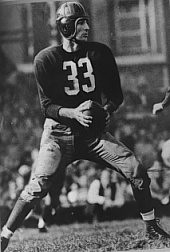
"Indianapolis gave Peyton Manning a $35 million signing bonus? Oh, don't you think maybe teachers and firefighters could have used a little of that money?"
Whenever an athlete signs for an ungodly amount of money, the organ grinders of social indignation crank up some variation of this little tune. It was played loudest in December 2000 when shortstop Alex Rodriguez signed a 10-year, $252 million contract with the Texas Rangers. The lyrics to this number go like this: With so many far more deserving people -- starving children! crossing guards! conjoined twins! -- how could the owner of the Rangers commit a quarter of a billion dollars to a baseball player?
The reasoning behind that statement is deeply flawed, and it involves a concept economists call "opportunity cost": When you spend money in one place, you are forgoing the opportunity to spend it somewhere else. When you purchase one thing, you are surrendering your ability to get something else. For example, when you buy that brand-new, ice-blue Jaguar, the monetary cost may be $60,000, but the opportunity cost may be a down payment on a house, a shiny boat, or a college education for an orphan. (Shame on you, by the way.) Whenever any of us spends money, we are calculating our own opportunity costs, and we tend to do it efficiently. But few of us are very good at recognizing anyone else's opportunity costs, let alone evaluating them.
Those who bemoan the fact that athletes are pooping in solid-gold toilets while teachers are eating dog food are saying society's priorities are out of whack. Not exactly a novel observation. However, to say that the money the Colts paid Peyton Manning (or at least a portion of it) should instead be distributed to teachers, firefighters, soldiers and the like is to assume that the opportunity cost of paying Manning $35 million is not paying public servants $35 million. That's not the case. The $35 million paid to Manning wasn't just sitting there in the Irsay family's bank account waiting to be spent any old way. The Colts received that money from a number of sources -- broadcast contracts, licensing agreements, stadium revenue, etc. -- all of which are contingent on the Colts fielding a football team. No team, no money. Further, unless you are the Arizona Cardinals, the point of fielding a professional football team is to win football games, and hopefully championships. The Colts organization believes that having Manning as their quarterback gives them the best chance to win, and they allocate their resources accordingly.
If it makes people feel better (but it probably won't), we could step back a few rows and look at the millions the Colts receive in revenue. That money comes from TV networks, licensees, concessionaires and others. And where did they get that money? From you and me, of course. When you buy a Peyton Manning replica jersey (or, really, any player's jersey), a tiny but nevertheless real percentage of the sale goes to the Colts, who use it to pay Manning. When you buy a bottle of Gatorade or a thing of Viagra or anything else advertised during NFL games, a tiny percentage goes to ESPN to buy advertising time during Sunday night football. Part of that ad fee ends up going to the Colts via the league's TV contract, and the Colts use it to pay Manning. Same thing with game tickets, big foam hats and any other consumer spending related to the NFL. So don't ask why the Colts are paying Manning $35 million rather than giving it to starving children. It's not an opportunity cost for the team. Instead, try asking why 1 million people are spending $35 apiece on Manning jerseys -- or Tom Brady jerseys or Donovan McNabb bobbleheads or Snickers bars or whatever -- instead of giving that money to starving children. Because if the Colts didn't have football players to give $35 million to, then they wouldn't have $35 million to give to football players. Sounds circular, right? Welcome to Earth.
All that said, don't get me wrong. There is definitely an opportunity cost associated with paying one player $35 million. Namely: That's $35 million you can't use to pay other players. Three years after signing his ridiculous contract with the Rangers, Rodriguez wanted out of Texas because he was tired of losing 90 games a year on a team that appeared to have no hope of improvement. The team, of course, had no hope of improvement because it had committed so much money to Rodriguez that it didn't have any left over to pay for pitching. Oops. Later, Rodriguez would say he didn't understand why people thought all he cared about was money. Turns out he wanted to make $252 million and win World Series titles. They don't pay these boys for their big brains.
(This is the first entry in Blows to the Head, an occasional series on the most common "thinking" errors committed by those who follow sports -- be they fans, journalists, analysts or just That Guy who says he could have made in the pros, too, if he'd really wanted to.)


No comments:
Post a Comment